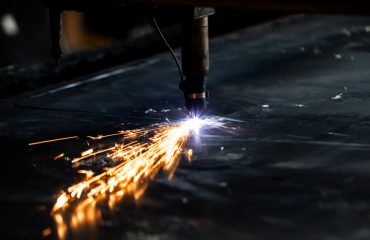body {
font-family: sans-serif;
line-height: 1.6;
}
h1, h2, h3 {
color: #333;
}
The selection of piping systems in chemical plants is a critical aspect of design and safety. The wrong choice can lead to catastrophic failures, environmental damage, and significant financial losses. This comprehensive guide delves into the key factors to consider when selecting pipes for your chemical plant, ensuring both operational efficiency and safety.
1. Understanding the Chemical Environment: The Foundation of Pipe Selection
Before even considering pipe materials, a thorough understanding of the chemical environment is paramount. This involves identifying all the substances that will come into contact with the piping system, including their:
- Chemical Composition: Precise identification of each chemical is essential. This includes knowing the concentration, temperature, and pressure at which the chemical will be handled.
- Temperature Range: Fluctuations in temperature can significantly impact the pipe’s performance and lifespan. Consider both operating and ambient temperatures.
- Pressure: The operating pressure of the system directly influences the pipe’s wall thickness and material strength requirements.
- Flow Rate and Velocity: High flow rates can induce erosion and corrosion, demanding careful material selection and pipe diameter calculations.
- Potential for Contamination: Consider the consequences of pipe material leaching into the process chemicals or vice-versa. This is especially crucial for pharmaceutical and food processing applications within chemical plants.
Detailed process flow diagrams (PFDs) and piping and instrumentation diagrams (P&IDs) are invaluable tools in this assessment.
2. Material Selection: Choosing the Right Pipe for the Job
The chemical environment dictates the appropriate pipe material. Common materials include:
- Stainless Steel (304, 316, etc.): Excellent corrosion resistance, suitable for a wide range of chemicals and temperatures. Different grades offer varying degrees of corrosion resistance.
- Carbon Steel: Cost-effective but susceptible to corrosion. Often used in less corrosive environments or with protective coatings.
- Duplex Stainless Steel: Combines the strength of carbon steel with the corrosion resistance of stainless steel, ideal for high-pressure applications.
- PVC, CPVC, and other Plastics: Suitable for specific chemicals and lower pressures and temperatures. Lightweight and easy to install, but may have limitations in terms of temperature and pressure resistance.
- Nickel Alloys (Monel, Inconel, Hastelloy): Excellent corrosion resistance in highly aggressive environments, often used for handling highly corrosive chemicals or at high temperatures.
- Glass-lined Steel: Offers the corrosion resistance of glass with the strength of steel, suitable for highly corrosive chemicals and high temperatures.
Material selection should always be based on comprehensive corrosion testing and compatibility studies.
3. Corrosion Resistance: A Critical Consideration
Corrosion is a major concern in chemical plants. Understanding the different types of corrosion (uniform, pitting, crevice, galvanic, stress corrosion cracking) is crucial for selecting appropriate materials and implementing mitigation strategies. Factors influencing corrosion include:
- Chemical Composition: Some chemicals are inherently more corrosive than others.
- Temperature: Higher temperatures generally accelerate corrosion rates.
- Velocity: High flow velocities can increase erosion-corrosion.
- Oxygen Concentration: Oxygen can significantly accelerate corrosion in many systems.
- pH: The acidity or alkalinity of the chemical can influence corrosion rates.
Corrosion inhibitors, protective coatings, and cathodic protection can be employed to mitigate corrosion risks.
4. Pressure Ratings and Wall Thickness: Ensuring Structural Integrity
Pipes must withstand the operating pressure of the system without failure. Pressure ratings are typically specified according to industry standards (e.g., ASME B31.3). The required wall thickness is calculated based on the operating pressure, pipe diameter, and material properties. Factors to consider include:
- Operating Pressure: The maximum pressure the pipe will experience during operation.
- Design Pressure: A safety factor is incorporated into the design pressure to account for potential fluctuations and uncertainties.
- Temperature: Temperature affects the material’s strength and thus the required wall thickness.
- Pipe Diameter: Larger diameter pipes generally require thicker walls to withstand the same pressure.
Accurate pressure rating calculations are essential for ensuring the structural integrity of the piping system.
5. Joint Selection and Installation: Completing the Piping System
The choice of joints significantly impacts the overall system’s integrity and leak-tightness. Common joint types include:
- Flanged Joints: Allow for easy disassembly and maintenance, but can be more expensive and require more space.
- Welded Joints: Provide a strong and leak-tight seal, but require skilled welders and post-weld inspection.
- Threaded Joints: Simple and cost-effective for smaller pipes, but may be less reliable at higher pressures.
- Compression Fittings: Easy to install and require no welding, suitable for lower pressure applications.
Proper installation procedures are crucial to ensure the longevity and safety of the piping system. Following established industry standards and best practices is essential.
Selecting the right pipes for a chemical plant is a complex process requiring careful consideration of many factors. A thorough understanding of the chemical environment, material properties, corrosion mechanisms, pressure ratings, and joint selection is crucial for ensuring both operational efficiency and safety. Consulting with experienced engineers and utilizing industry standards is highly recommended.
SEO Tags:
chemical plant piping, pipe selection, chemical process piping, corrosion resistance, pressure rating pipes




